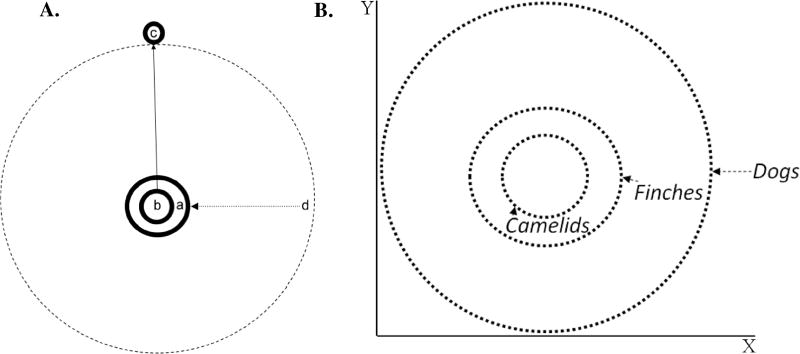Figure 3.
a) Prospects for the genomic rules of variation: The generation of biodiversity, represented by circle c (cluster c contains new hypothetical varieties to be developed by humans), the preservation of endangered biodiversity is represented by circle b, while all organisms with compatible genomes are represented by circle a, which currently includes endangered organisms; circle d represents the currently over-inflated number of species, including ‘phenotypic species’ and ‘behavioral species’. Notice that once the factor of compatible genomics is added, the currently over expanded number of ‘species’ will dramatically shrink, moving down from d towards a (horizontal arrow). b) Each orbit of organisms with compatible genomes is one and the same theme, the same genomic species or genomic population. Each dot on each expanding circle represents a different variety for the compatible species that are represented by the complete orbit. The molecular genetic language spoken by all the dots within each orbit is the same, spoken through different local accents: their phenotypes and behaviours.

